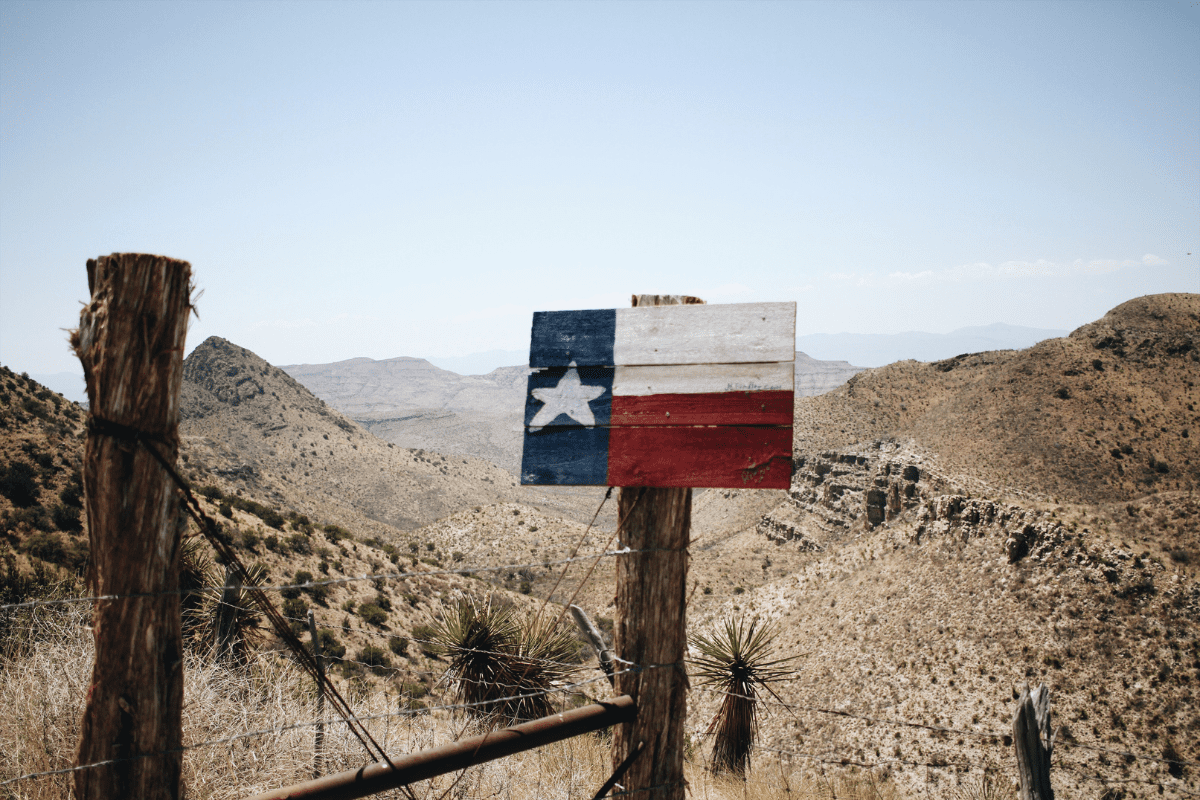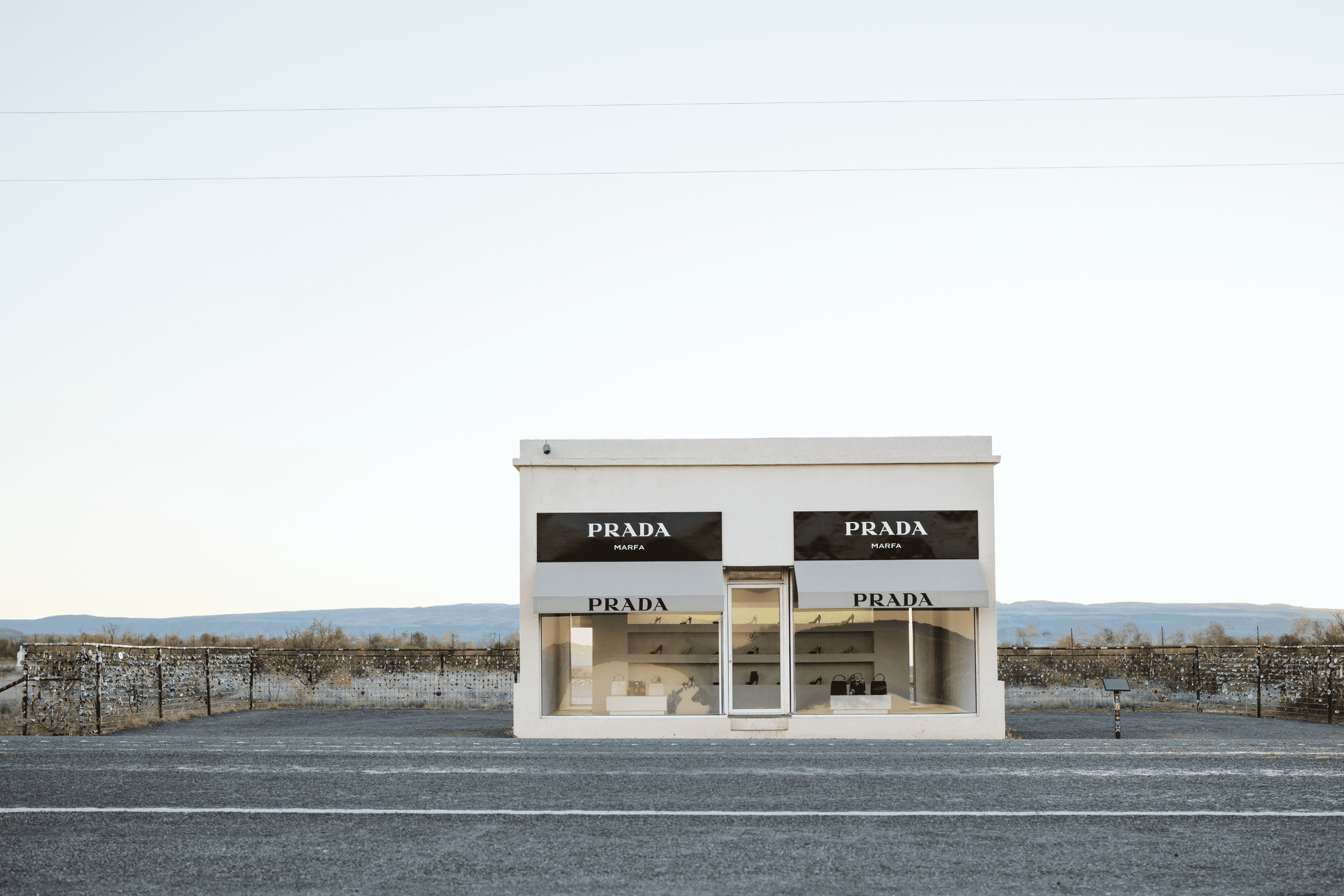
Photography by Hannah Gentiles
On the map, it’s a tiny dot in West Texas, population 1,800. In person, it’s everything you’d never expect in the middle of nowhere: world-class art. Five-star food. Eclectic free-spirit artists mingling with true-grit Texans who are gonna live and die how they wanna live and die, no rules or chit-chat needed, thank you very much.
Marfa Lights, the nighttime phenomenon that causes cars to line up along the highway, adds a twist of “What?” to a place that’s already a head scratcher. Throw in the Prada pop-up store, a 2005 marketing stunt that has become a permanent footnote solidifying the destination’s cool factor, and you have a city of full-blown contradiction. In spite of (or because of) that, Marfa has become the darling of Texas, a point of intrigue for anyone who loves art, style and culture, and wants to see for themselves how these three converge in this dusty desert town.

Founded as a water stop and railway freight headquarters in 1883, Marfa was an unlikely candidate to become a jet set obsession. Nearby towns like Alpine and Terlingua hung their Stetsons on the college crowd and chili, respectively, while Marfa welcomed artists, most notably Donald Judd. Attention for his work morphed into attention for the town, transforming it into a tourist draw with annual events like the Marfa Invitational and the Trans-Pecos Festival of Music and Love.
So why do the crowds flock here? Devotees believe it boils down to the insider mentality. In other words, you have to get it to get Marfa. It’s a high/low destination with hotel lobbies boasting meticulous modern design that stand in stark contrast with quiet streets where tumbleweed might literally roll through. Fine meals that require reservations months in advance, yet in the morning, there’s no place open for breakfast. The Chinati Foundation fully approved by the art world powers that be, then from the edge of town, nothing but desert to see.

Cochineal is the most name-droppable restaurant in town and will accept your reservation by email if they have space (which they probably won’t, but it’s worth a try). Should you end up at Aster or Margaret’s instead, you won’t be disappointed. As for accommodations, Hotel St. George and the classic Hotel Paisano are both top-notch. The latter has the bonus of Hollywood cachet since James Dean, Rock Hudson and Elizabeth Taylor all stayed there while filming the 1956 film Giant. This midcentury clout adds a layer of glam to afternoons spent killing time.
And that’s the whole point: While there are certainly things to do, the nothingness of Marfa is one of its main attractions and part of its mystique. But you need not get to the bottom of the fuss to see what the fuss is all about — to be charmed by this creative mecca. To be enthralled by the different mix of people you encounter. To be wooed by a destination that feels wholly unique. Should you end up wandering through town loving what you find but still feeling like maybe you’ve missed something, you might actually have hit on everything Marfa is about. When the want for constant entertainment can’t be filled, we are left face-to-face with ourselves, the natural world around us, and small moments of beauty in art and food born out of someone’s soul-stirred desires to be nourished.

Which brings us back to the contradictions, to the high/low factor, to the internal truth we can’t avoid with this type of travel. Marfa strips away what’s extra and leaves us with dusty nuggets of truth. Not the whole truth, but pieces of it. Just enough to keep us intrigued and coming back for more. It’s the land of messy contradiction, yet it feels beautifully complete. Welcome to Texas, y’all.


